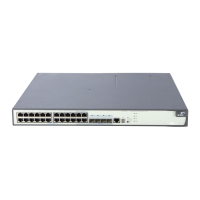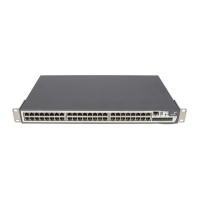20
Network diagram
Figure 4-7 Network diagram for PIM-DM configuration
Ethernet
EthernetEthernet
N1N2
Vlan-
i
n
t10
2
Vlan-i
nt1
02
Vl
a
n-int10
3
Vlan-i
nt
103
Device Interface IP address Device Interface IP address
Switch A Vlan-int100 10.110.1.1/24 Switch D Vlan-int300 10.110.5.1/24
Vlan-int103 192.168.1.1/24 Vlan-int103 192.168.1.2/24
Switch B Vlan-int200 10.110.2.1/24 Vlan-int101 192.168.2.2/24
Vlan-int101 192.168.2.1/24 Vlan-int102 192.168.3.2/24
Switch C Vlan-int200 10.110.2.2/24
Vlan-int102 192.168.3.1/24
Configuration procedure
1) Configure the interface IP addresses and unicast routing protocol for each switch
Configure the IP address and subnet mask for each interface as per
Figure 4-7. Detailed configuration
steps are omitted here.
Configure the OSPF protocol for interoperation among the switches in the PIM-DM domain. Ensure the
network-layer interoperation among Switch A, Switch B, Switch C and Switch D in the PIM-DM domain
and enable dynamic update of routing information among the switches through a unicast routing
protocol. Detailed configuration steps are omitted here.
2) Enable IP multicast routing, and enable PIM-DM on each interface
# Enable IP multicast routing on Switch A, enable PIM-DM on each interface, and enable IGMP on
VLAN-interface 100, which connects Switch A to the stub network.
<SwitchA> system-view
[SwitchA] multicast routing-enable
[SwitchA] interface vlan-interface 100
[SwitchA-Vlan-interface100] igmp enable
[SwitchA-Vlan-interface100] pim dm
[SwitchA-Vlan-interface100] quit
[SwitchA] interface vlan-interface 103
[SwitchA-Vlan-interface103] pim dm

